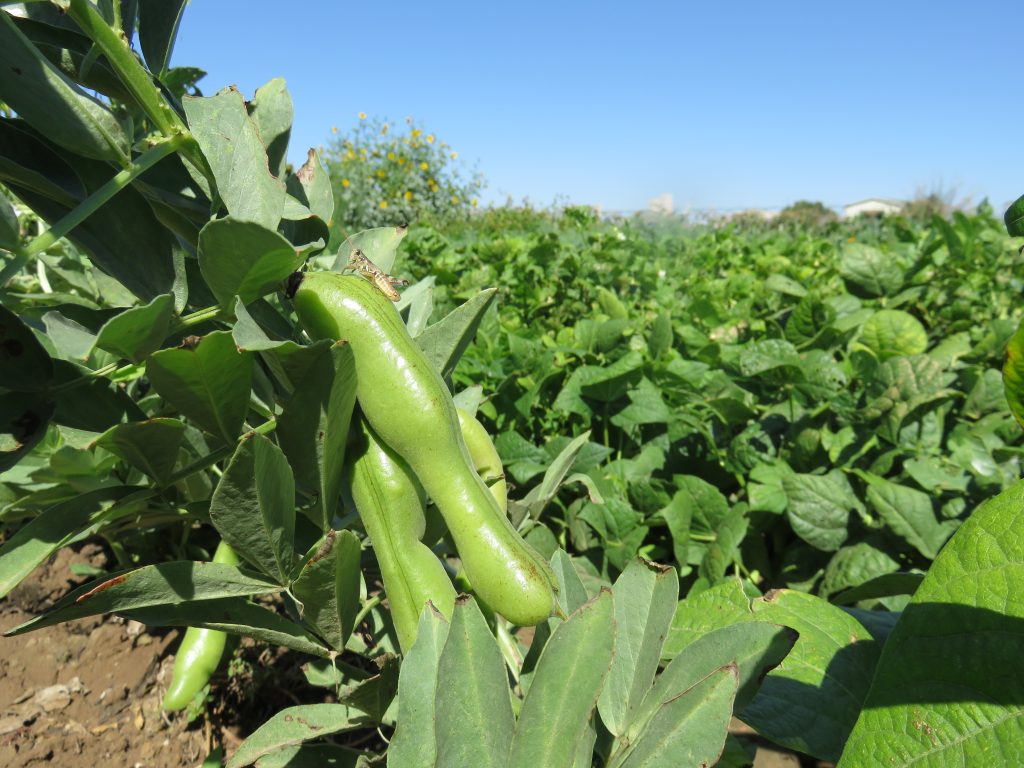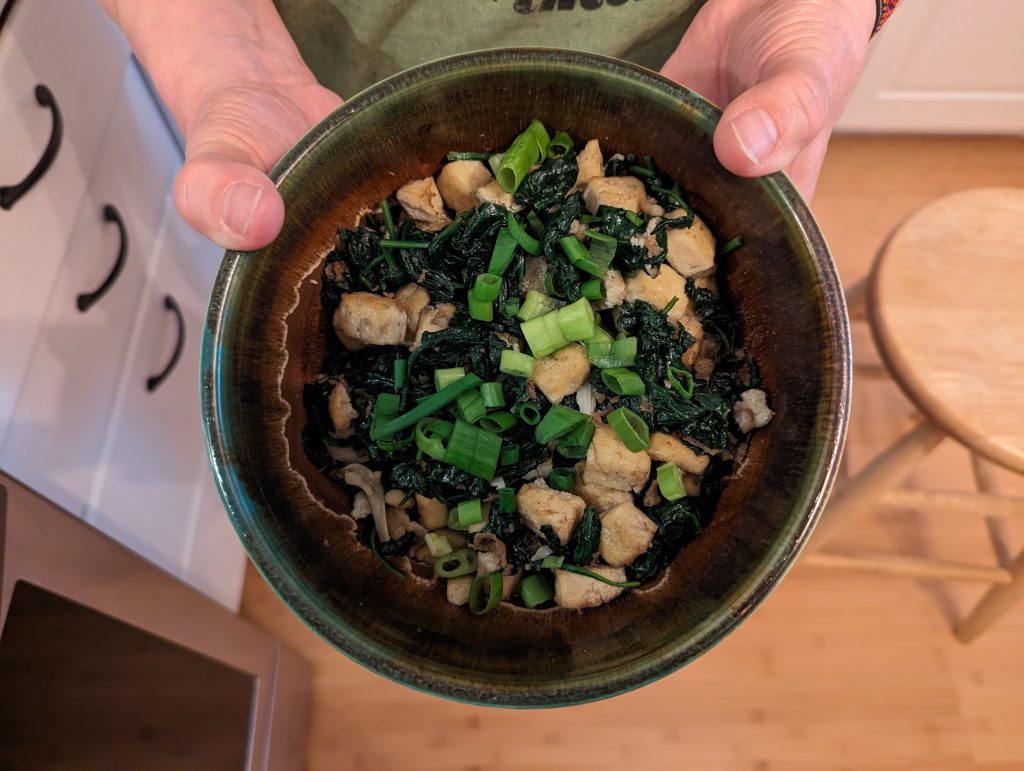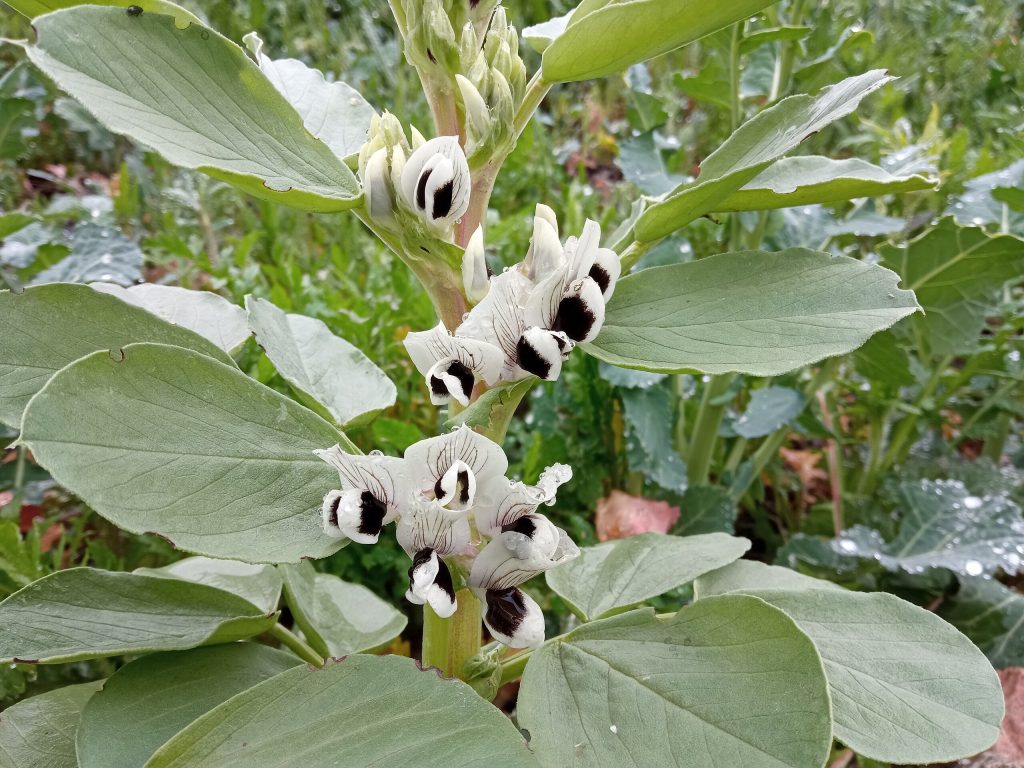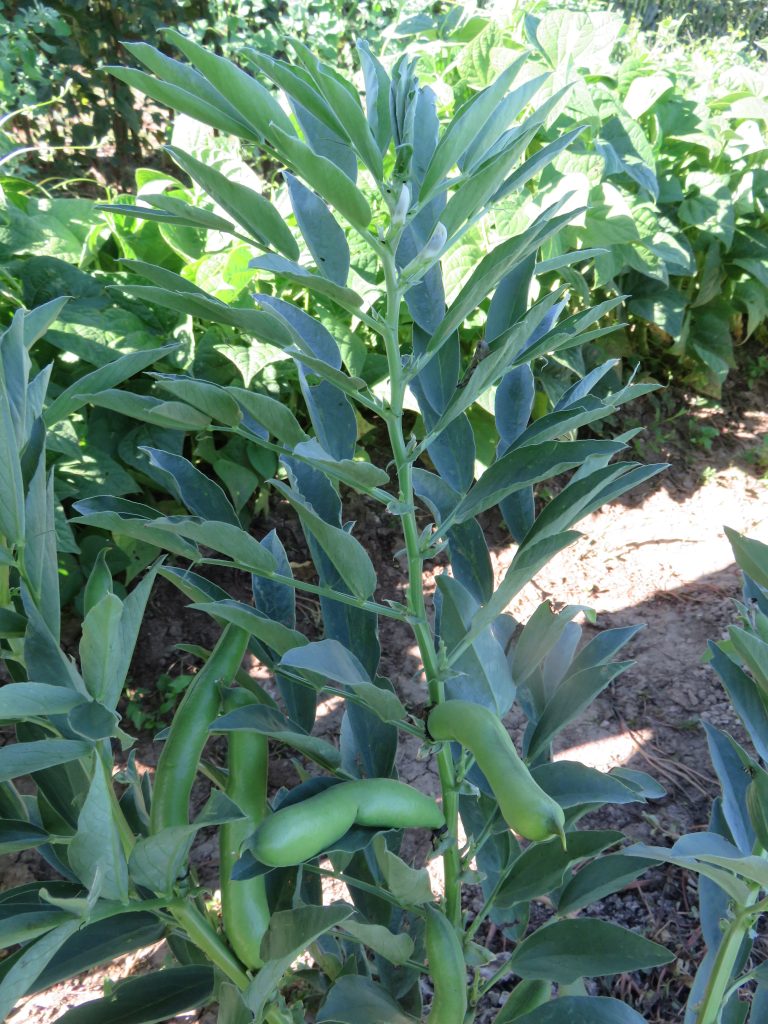Fava Bean (Vicia faba)
Patrick Byrne
Colorado State University, Fort Collins, Colorado 80523
Corresponding author: patrick.byrne@colostate.edu
OUTLINE
- Overview
- Origin and domestication
- Production and use
- Conservation and breeding
- Favism
- References
- Chapter information
1. OVERVIEW
Fava bean (Vicia faba) is also known by many other names: faba bean, broad bean, horse bean, Windsor bean, and more. By whatever name, it is a productive and nutritious member of the legume family (Fabaceae), grown for its protein-rich seeds and as a forage and cover crop. Fava bean is commonly grown and consumed in Europe, the Middle East, East Asia, Australia, and parts of Africa and Latin America, but is an overlooked crop in the U.S. V. faba is an erect, robust plant 30-180 cm tall, adapted to cool, temperate climates (Purseglove, 1968). It has white flowers with a characteristic black blotch and fleshy seed pods with up to eight large, flat seeds.
2. ORIGIN AND DOMESTICATION

Fava bean is believed to have originated in the eastern Mediterranean region, but its exact place of origin is unknown. It is considered one of the oldest cultivated plants, with the earliest archaeological evidence for domestication of this species dating to over 10,000 years BP (Caracuta et al., 2015). Before 1492 when beans from the Americas began to arrive in Europe, this crop was the only edible bean grown on the continent. Fava bean became an important food crop in China after 1200 CE (van Wyk, 2005).
3. PRODUCTION AND USE

Being a cool-adapted crop, fava beans are grown in temperate regions such as northern Europe, or in highland areas or as a winter crop in the tropics. China is the largest producer, followed by Ethiopia and Australia (Khazaei et al., 2019). The seeds are eaten at all stages, from small, tender green beans to mature dried seeds. Pods and all can be eaten at the very youngest stage. Some authors recommend removing the outer seed coat from fresh beans, but others say that is an unnecessary step. However, the seed coats should be removed from dried beans after soaking overnight. Fava beans are prepared in a variety of ways: steamed, boiled, pureed, roasted, and in soups, tofu, and Egyptian-style falafel. In addition to culinary uses, the species is grown for animal feed and forage and as a cover crop to reduce erosion and add nitrogen to the soil. Fava beans are a very nutritious food, containing 18-35% protein, high levels of folate, iron, manganese, magnesium, and phosphorus (Maalouf et al., 2022; Wikipedia, 2023), and a variety of other health-promoting compounds (Martineau-Cote et al., 2022).
4. CONSERVATION AND BREEDING

V. faba is a diploid species with six pairs of chromosomes and a massive genome size estimated at 13 Gb of DNA (Jayakodi et al., 2023). It is predominately self-pollinated, but its flowers are visited by bees and therefore, considerable cross-pollination occurs. Fava bean does not produce fertile offspring in crosses with other species in the genus; however, variation within V. faba is considered ample for genetic improvement (Maalouf et al., 2019). Skovbjerg et al. (2023) analyzed a large panel of fava bean genotypes to determine population structure and conduct genome-wide association analysis for key agronomic traits.
Fava bean is subject to a long list of biotic stresses, including fungal, bacterial, and viral pathogens, black bean aphid, and the parasitic plant Orobanche crenata (Wikipedia, 2023). Several of these are the targets of resistance breeding programs, as explained by Maalouf et al. (2019). The most important abiotic stresses of fava bean are heat, drought, waterlogging, salinity, and frost; genetic variation for tolerance to these stresses has been reported (Maalouf et al., 2019; 2022). Other breeding objectives include low levels of vicine and convicine (see ‘FAVISM’ below), better balance of amino acids for human nutritional needs, and reduced concentrations of seed phytate and protease inhibitors for improved nutrient bioavailability (Jayakodi et al., 2023). Breeding strategies employed in fava bean are reviewed by Maalouf et al. (2022).
The publication of a reference genome sequence for V. faba (13 Gb of DNA; 34,221 protein-coding genes) is a milestone in fava bean breeding and genetics (Jayakodi et al., 2023). Gene order in the sequence is roughly syntenic and collinear with other legume species. A reference sequence will facilitate development of high-density markers, application of genomics-enabled breeding, and after target gene identification, the use of gene editing.
The largest ex situ collection of fava bean germplasm (10,320 accessions) is held by the International Center for Agricultural Research in Dry Areas (ICARDA) (Maalouf et al., 2022). Other genebanks with large collections are located in Australia, Germany, and Russia (CGIAR Genebank Platform, 2019). ICARDA has developed subsets of accessions especially relevant to drought, heat, and cold tolerance (Maalouf et al., 2022).
5. FAVISM

A small percentage of the human population, estimated at 4.9% globally (Khazaei et al., 2019), suffers from favism, an acute hemolytic anemia. This is a hereditary condition caused by a deficiency of the enzyme glucose-6-phosphate dehydrogenase, which metabolizes two compounds: the pyrimidine glycosides vicine and convicine (v-c) (Khazaei et al., 2019). An accession with low levels of those compounds in the cotyledons has been identified and low v-c cultivars are available or under development in several countries (Khamassi et al., 2013). The responsible gene for reduced v-c content (VC1) has been identified and cloned (Bjornsdotter et al., 2021).
6. REFERENCES
Bjornsdotter E, Nadzieja M, Chang W, Escobar-Herrera L, Mancinotti D, et al. 2021. VC1 catalyses a key step in the biosynthesis of vicine in faba bean. Nature Plants 7:923-931. DOI: 10.1038/s41477-021-00950-w
Caracuta V, Barzilai O, Khalaily H, Milevski I, Paz Y, Vardi J, Regev L, Boaretto E. 2015. The onset of faba bean farming in the Southern Levant. Scientific Reports 5:14370. DOI: 10.1038/srep14370
CGIAR Genebank Platform. 2019. Faba bean. CIGAR Genebank Platform. Accessed 6 October, 2023. Available from: genebanks.org/resources/crops/faba-bean/
Jayakodi M, Golicz AA, Kreplak J, Fechete LI, Angra E, et al. 2023. The giant diploid faba genome unlocks variation in a global protein crop. Nature 615:652-659. DOI: 10.1038/s41586-023-05791-5
Khazaei H, Purves RW, Hughes J, Link W, O’Sullivan DM, et al. 2019. Eliminating vicine and convicine, the main anti-nutritional factors restricting faba bean usage. Trends in Food Science & Technology 91:549-556. DOI: 10.1016/j.tifs.2019.07.051
Khamassi K, Ben Jeddi F, Hobbs D, Irigoyen J, Stoddard F, O’Sullivan DM, et al. 2013. A baseline study of vicine–convicine levels in faba bean (Vicia faba L.) germplasm. Plant Genetic Resources 11:250-257. DOI: 10.1017/S1479262113000105
Maalouf F, Hu JG, O’Sullivan DM, Zong XX, Hamwieh A, Kumar S, Baum M. 2019. Breeding and genomics status in faba bean (Vicia faba). Plant Breeding 138:465-473. DOI: 10.1111/pbr.12644
Maalouf F, Khater LA, Babiker Z, Mohamed A. 2022. Genetic and genomic research for abiotic stresses in faba bean. In: C. Kole (Ed.) Genomic designing for abiotic stress resistant pulse crops. Springer, Cham. pp. 249-270. DOI: 10.1007/978-3-030-91039-6_7
Martineau-Cote D, Achouri A, Karboune S, L’Hocine, L. 2022. Faba bean: An untapped source of quality plant proteins and bioactives. Nutrients 14:1541. DOI: 10.3390/nu14081541
Purseglove JW. 1968. Tropical crops: Dicotyledons. Longman Group Ltd., London. pp. 319-321.
Skovbjerg CK, Angra D, Robertson-Shersby-Harvie T, Kreplak J, Keeble-Gagnère G, et al. 2023. Genetic analysis of global faba bean diversity, agronomic traits and selection signatures. Theoretical and Applied Genetics 136:114. DOI: 10.1007/s00122-023-04360-8
van Wyk, E-B. 2005. Food crops of the world. Timber Press, Portland, OR.
Wikipedia. 2023. Vicia faba. Wikipedia. Accessed 5 October, 2023. Available from: wikipedia.org/wiki/Vicia_faba
7. CHAPTER INFORMATION
Chapter citation: Byrne P. 2023. Fava Bean (Vicia faba). In: Chen K, Byrne P (Eds.) Understudied Indigenous Crops. Fort Collins, Colorado: Colorado State University. Date accessed. Available from https://colostate.pressbooks.pub/understudiedindigenouscrops/chapter/fava-bean/
Chapter editor: Katheryn Chen

